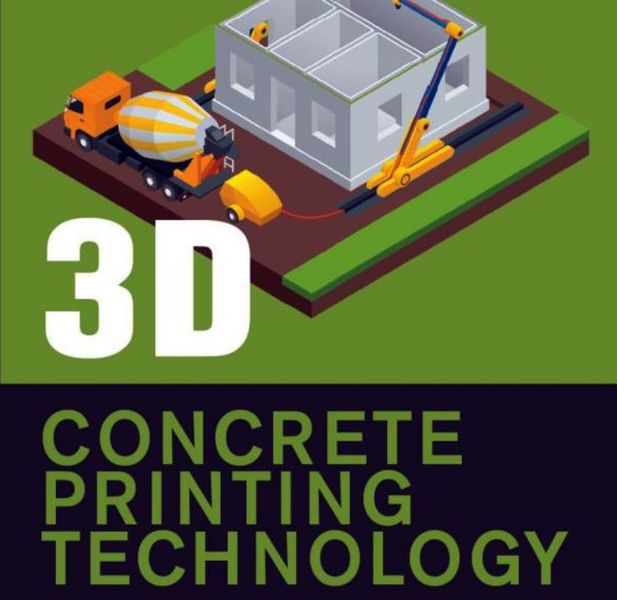
The story of concrete 3D printing is just at its birth, and there are many chapters left to write. Also known as “construction 3D printing”, this is the technology of 3D printing when combined with concrete extrusion. With this technology, one can theoretically 3D print large structures including buildings, bridges and construction components.
To many the notion of concrete is a simple matter; just call a provider and they’ll show up with a truck or three full of the wet stuff for pouring. But that’s not really the truth, as concrete is vastly more complicated than mixing water and cement.
And it should be, too, as the structures built with concrete are often inhabited, and thus people’s lives depend on the quality and strength of a concrete pour. This is why engineers at building sites spend time to perform concrete testing; they’re making certain it’s going to work correctly.
And that’s also the reason for this book, which explores the new universe of concrete 3D printing. But like traditional concrete pouring, similar attention must be paid to the methods and results of the process.
After a brief introduction to the two major methods of concrete 3D printing, those being extrusion and powder-bed approaches, the book then delves into deeper issues in this technology.
One of the key issues is the mehdods of testing Portland cement concrete at “construction-scale”. It’s easy to do a test in a lab, but far more challenging in the field where the environment can cause adjustments.
The book explores several different techniques for using concrete 3D printing in construction, including “lost formworks”, which are quite similar to the lost-wax method used in smaller-scale 3D printing. Another approach reviewed is methods of including fiber-reinforced concrete materials, which can greatly strengthen a print.
Several chapters discuss methods of mixing concrete, which is a critical step to prepare a properly strong concrete for printing. Machine design, mixing, and mixtures are reviewed.
Portland cement, magnesium potassium phosphate cement, geopolymers, cementious powders and other common concrete base materials are discussed, with an emphasis on the strengths and a comparison of results.
Finally, the book explores the potential for industrial adoption in the Australian market. While this is a fairly narrow market in a worldwide sense, it does provide insights that may be applicable in other regions.
If you have any interest in the science of construction 3D printing, you might consider reading this book, which covers many of the more advanced aspects of this new and emerging technology.
Via Amazon
